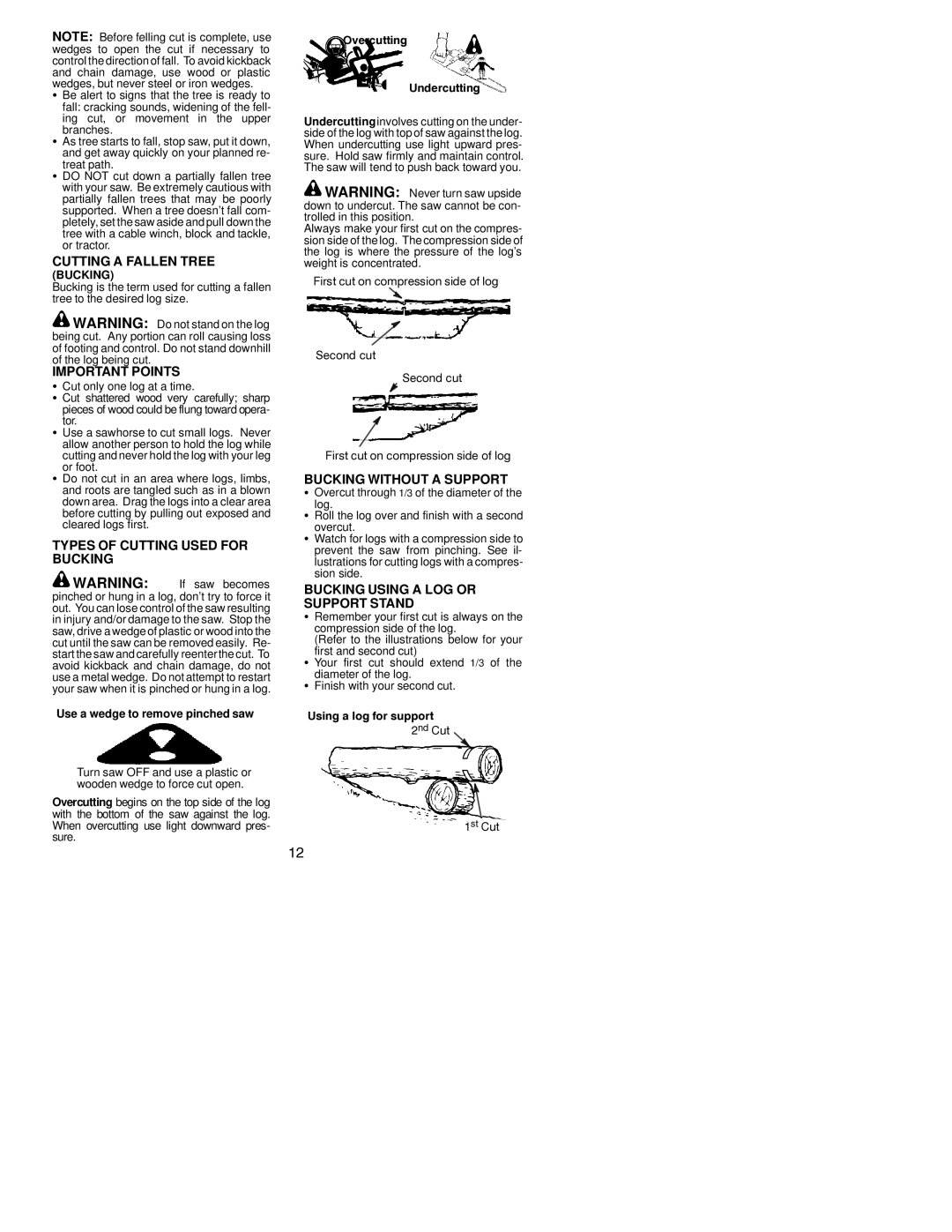S1634 LE, S1838 LE specifications
Poulan has long been recognized as a reliable name in the outdoor power equipment industry, and their chainsaws, particularly the Poulan S1634 LE and S1838 LE models, are prime examples of this reputation.The Poulan S1634 LE is designed for homeowners seeking a lightweight and efficient chainsaw for various cutting tasks. With a 16-inch cutting bar, it is well-suited for trimming branches, tackling small to medium-sized trees, and firewood preparation. The chainsaw is powered by a 33cc 2-cycle engine that provides ample power while remaining easy to handle. One of the standout features of the S1634 LE is its lightweight construction, weighing in at just over 10 pounds, allowing for comfortable maneuverability, especially during extended use.
The S1838 LE model takes a step up in terms of power and capability. With an 18-inch cutting bar and a more robust 42cc engine, this chainsaw can handle larger tasks with ease. The increased bar length allows users to cut through thicker trees and larger branches without excessive effort. Like the S1634 LE, the S1838 LE is designed with user comfort in mind, incorporating features such as an anti-vibration system that reduces user fatigue and a cushioned handle for a secure grip.
Both models come equipped with reliable safety features, including a chain brake that engages automatically in the event of kickback, providing additional peace of mind during operation. The easy-access air filter and tool-free chain tensioning system simplify maintenance and enhance overall usability, allowing users to keep their equipment in optimal condition with minimal hassle.
Furthermore, both chainsaws feature Poulan's reliable start technology, which utilizes a primer bulb and choke for quicker starts, minimizing downtime. The fuel-efficient engines of both models also help to reduce running costs, making them an economical choice for homeowners and occasional users.
In summary, the Poulan S1634 LE and S1838 LE chainsaws are excellent choices for anyone looking for a dependable, user-friendly chainsaw for various cutting tasks. With powerful engines, ergonomic designs, and essential safety features, these models deliver the performance and reliability that Poulan is known for, making them suitable for both novice and experienced users alike. Whether for yard maintenance or occasional lumberjack tasks, these chainsaws provide an impressive blend of power, efficiency, and user comfort.

